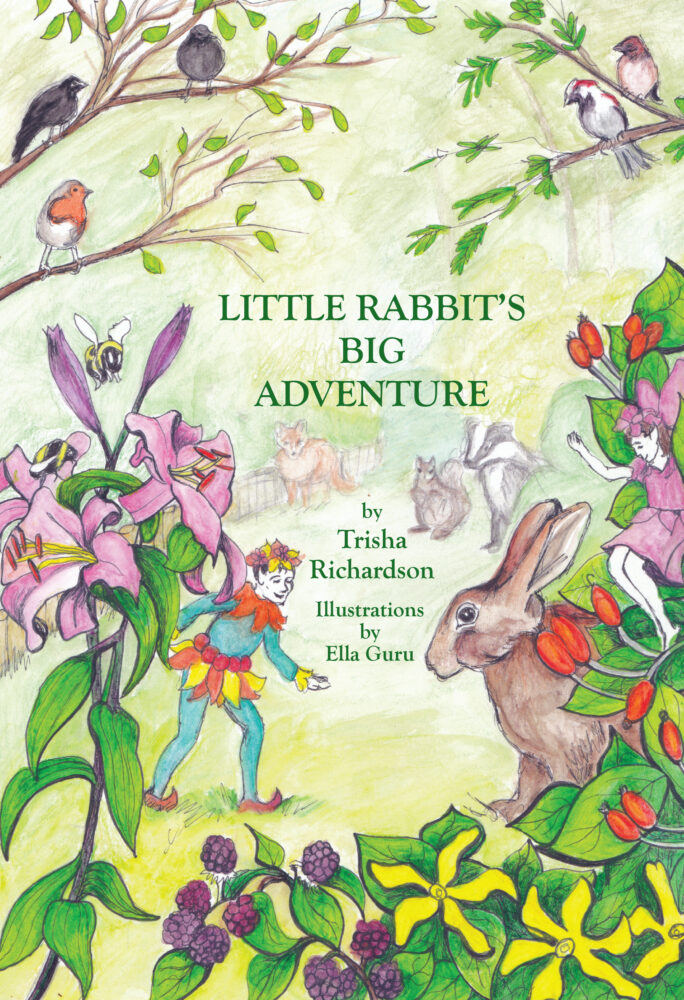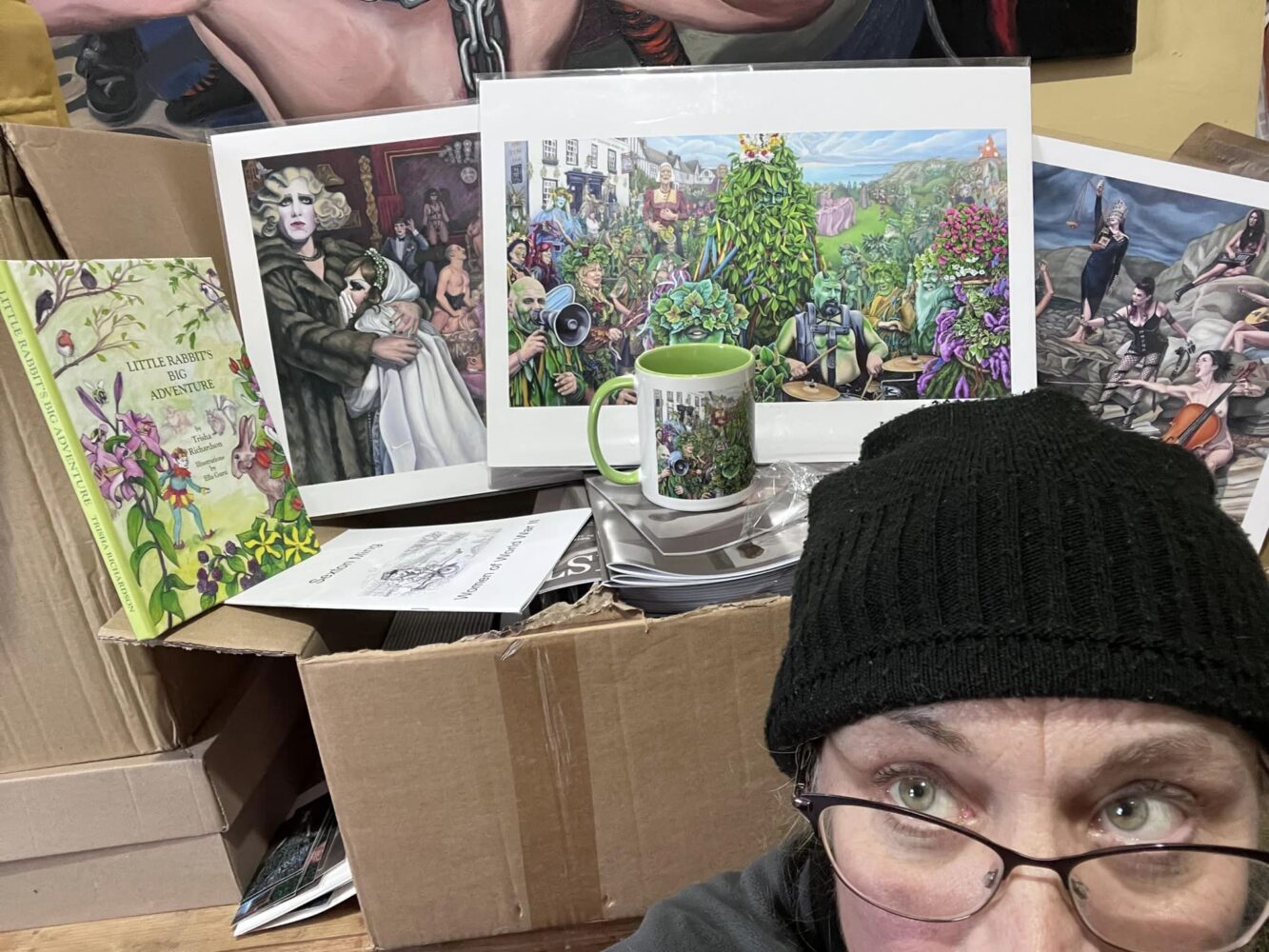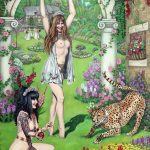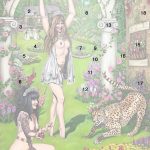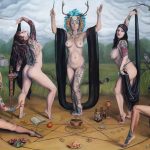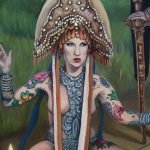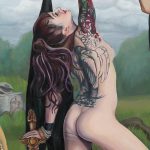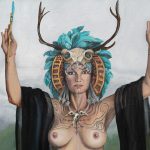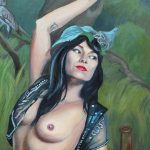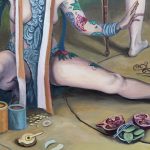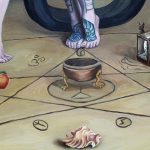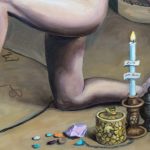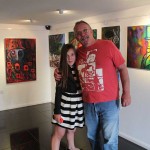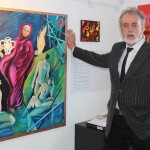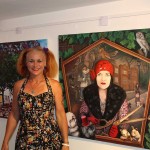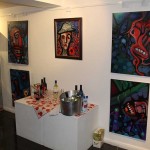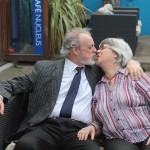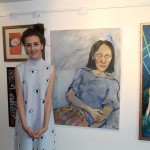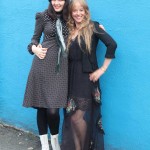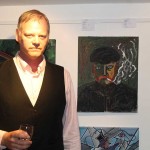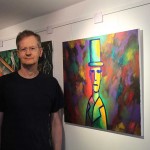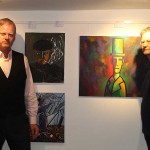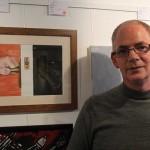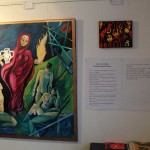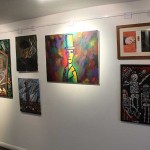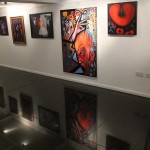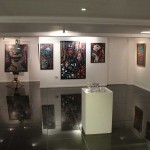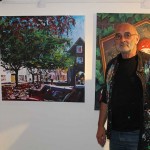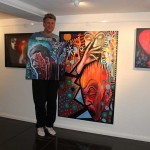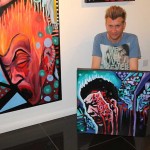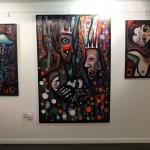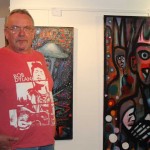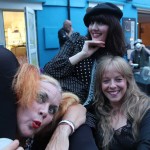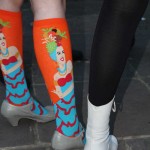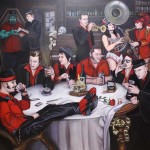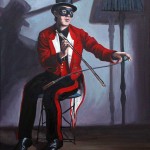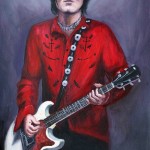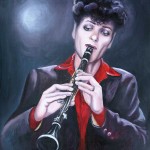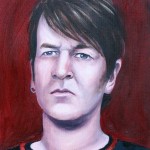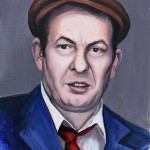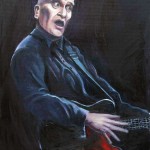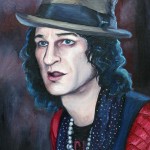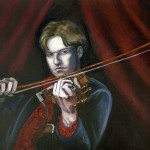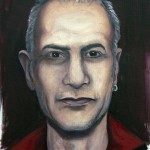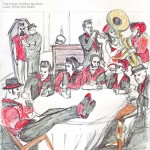‘Stuckism after 25 years: reflections on time and distance’

When I painted the Stuckists Last Supper in 2009, the 13 founding members all lived in either London or Medway. It was quite easy for me to travel around taking reference pictures of everyone.
But now we are all quite scattered, across different towns, counties and countries.
For various reasons, travel has been difficult over the last few years. This year it was to do with Sexton’s heart surgery. It wasn’t possible for me to travel around the country to photograph everyone in the same lighting to make it look like they were all sitting for a group portrait in the same room.
By the time I could’ve gone somewhere, I only had about three days. So I went to York, on a whim and a wish from a long lost and found dear friend. I already had the idea that I would paint the Stuckists in separate windows, and there is something compelling about the bleakness of Northern England.
I’ve realised that it takes me a long time to process things. During the lockdown I had enough of a backlog of ideas for paintings that I just did lots of painting. When in a group zoom ‘pub’ in 2020, someone asked if I was going to start painting people in squares because we were all locked at home. I was horrified by the idea.
But this Stuckist painting reflects not only that time, but how difficult it has been to return to a normal life. No one seems to talk about that. I am just not the same person I was five years ago.
Time is passing. This is something I’m acutely aware of at the moment. I notice it in crumbling buildings where nature is slowly taking over again.

The first window shows my friend Mary von Stockhausen, the first Stuckist outside the UK, when she went to see my self portrait when it was showing in Czechia last year. That self portrait was the first painting I did during lockdown. I had already planned every detail. It was also a documentation of that last year of life as we knew it. I had to portray myself like that rather than take a picture of how I am now, living the quiet life and mostly wearing sweatpants rather than fancy frocks. (if the man’s head carved on the left resembles Sexton Ming, it’s purely coicidental, unless he time travelled back several centuries to pose for this church in Leeds.)
Moving across the top row there is Paul Harvey at the end. The Moet refers to when Paul and I crashed an opening at the Mall Galleries where waiters were doling out champagne.

The next row shows Joe Machine as a holy man, referring to his paintings. Then there is Charles Thompson as Jonathan Yeo’s 2024 portrait of Charles III (and red knickers from Charles Thomson’s most famous painting ), then Wolf Howard with skulls, referring to his paintings, and finally Elsa Dax, with whom I did the Stuckist Tarot project in 2012, and who has been a constant in my artistic life throughout the years.
The crumbling facade is mainly from the 12th century House of Trembling Madness in York, along with details from Sark, Kirkstall Abbey, and York Minster.
Beyond all the decay, behind Elsa in the bottom right, is a round window showing a sunny day in the Yorkshire Dales, a bright spark of hope and an intention to spend more time embracing nature as times passes. Despite all the decay and destruction it’s important to notice the simple beauty of a country walk. (and yes another family sneaked in, our dear cat Brup, who was born in Elsa’s house over 13 years ago, and still lives on. Although he is now blind, Brup still rules the roost.)

